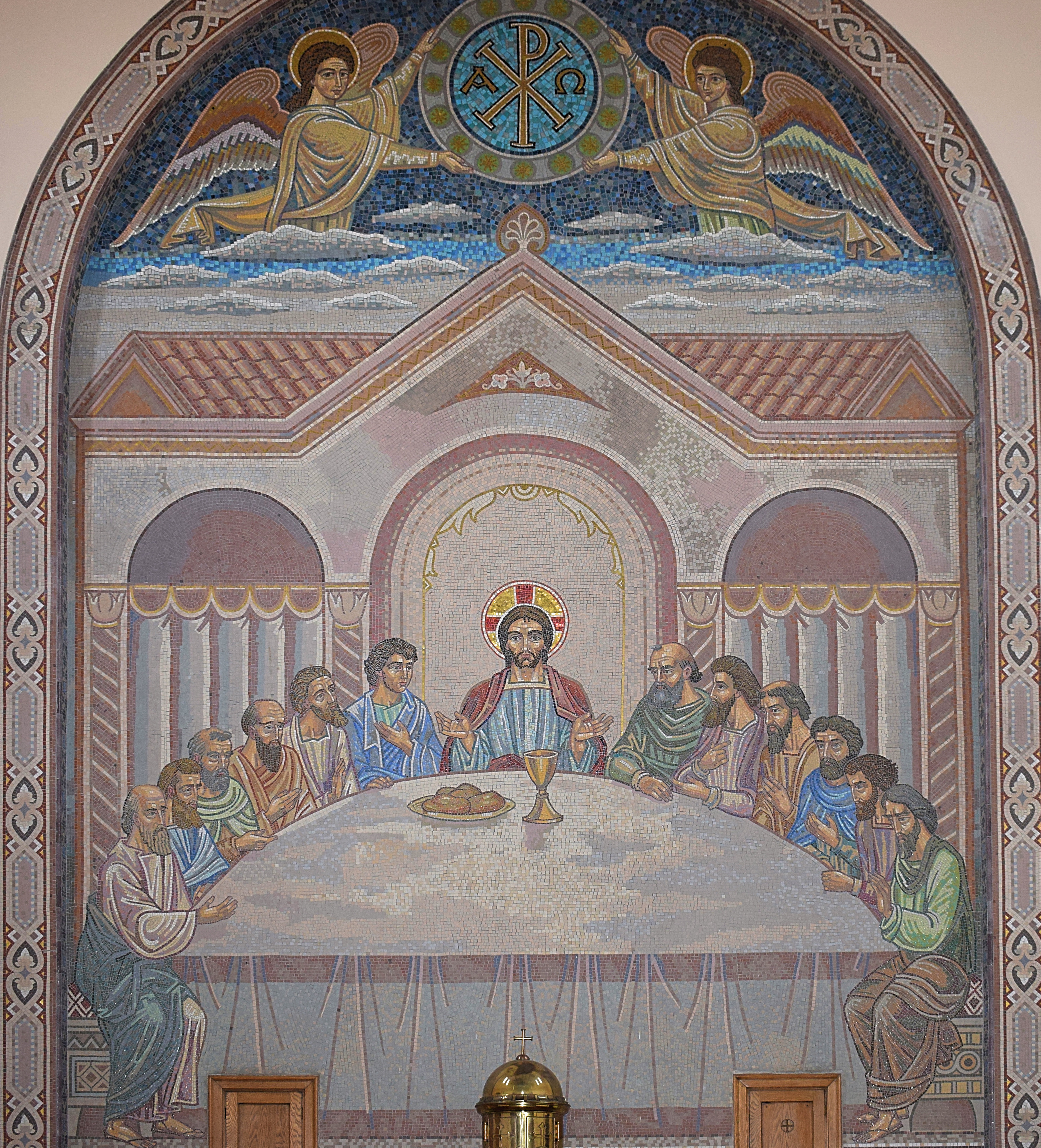On the night he was betrayed, Christ gathered his twelve apostles together for an evening meal that we know as the ‘Last Supper’. This meal was a celebration of the Jewish Passover, but it was also much more than that.
St Luke tells us that once the group was gathered in the upper room of a house in Jerusalem, Christ “took a loaf of bread, and when he had given thanks, he broke it and gave it to them, saying, ‘This is my body, which is given for you. Do this in remembrance of me.’ And he did the same with the cup after supper, saying, ‘This cup that is poured out for you is the new covenant in my blood.”
In these gestures, Christ introduced a new sacred ritual for his followers – the Eucharist (which means ‘thanksgiving’). Catholics understand that in the Eucharist, the bread and wine are not merely symbols. According to the words of Christ, his body and blood – which were offered as a sacrifice on the cross – are made present. For this reason, the Eucharist (also known as the ‘Mass’ or ‘Holy Communion’) is a very special ceremony and is viewed as the “source and summit of the Christian life.”
The Last Supper is described in all four gospels (Matthew 26:17-30; Mark 14:12-26; Luke 22:7-38; John 13:1-38). While at table, Christ also shared some last words with the apostles. He referred to the treachery of Judas, the fact that St Peter would deny him and the importance of service.
This imposing mosaic of the Last Supper, thought to be by Ludwig Oppenheimer, was installed in 1949 in the sanctuary of Our Lady of Perpetual Succour in Nottingham. It features the twelve apostles at table with Christ, with the beardless St John to his right. The table is semicircular, to emphasise that the congregation is also present at the meal, gathered around the other half.
Curiously, wherever you move within the church, the all-seeing eyes of Christ appear to follow you wherever you go. Above the scene are two angels holding a ‘Chi-Rho’ symbol, a monogram of the first two letters of the word ‘Christ’ in Greek.
See the full image:
 Ludwig Oppenheimer / The Last Supper / Mosaic / 1949
Ludwig Oppenheimer / The Last Supper / Mosaic / 1949
Where to find this work of art
Our Lady of Perpetual Succour, Bulwell
Read the relevant passage
Luke 22:7-38

“For I received of the Lord that which also I delivered unto you, that the Lord Jesus in the night in which he was betrayed took bread; and when he had given thanks, he brake it, and said, ‘This is my body, which is for you: this do in remembrance of me.’ In like manner also the cup, after supper, saying, ‘This cup is the new covenant in my blood: this do, as often as ye drink it, in remembrance of me.'” (1Cor11)
LikeLike